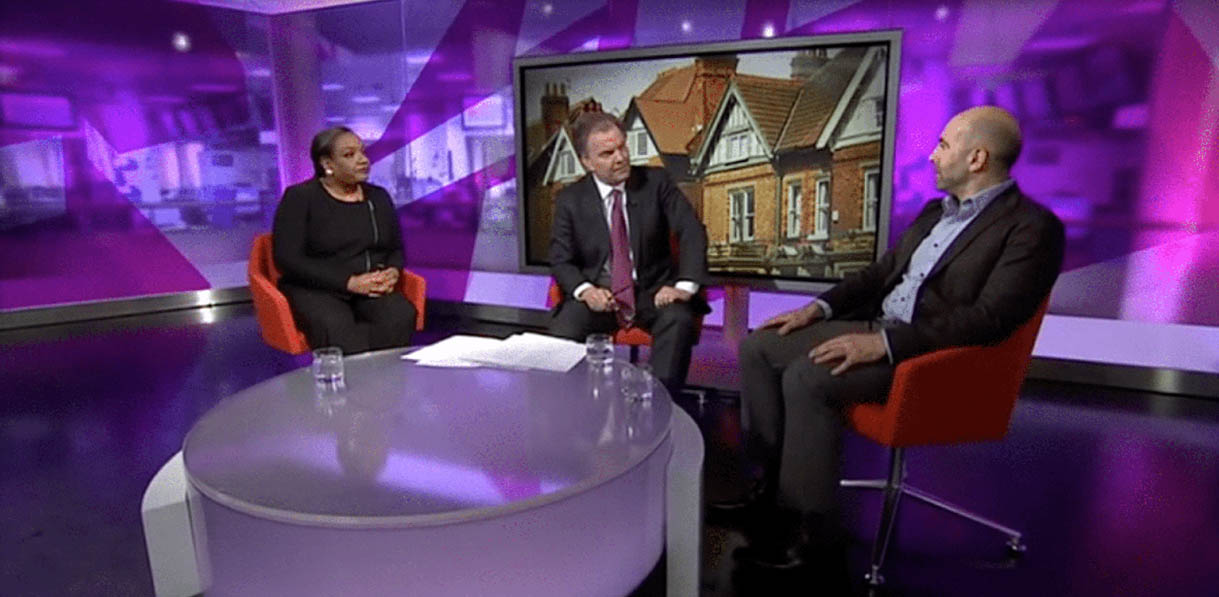Tax and regulation costs are increasing for landlords. Increasingly colleagues are asking me for advice on how to find a tenant without using an agents. In London, agents charge as much as 10% of the annual contract just to find the tenant and that can easily add up to £2000 or more, plus VAT. Doing it yourself is considerable more complex than it was a few years ago – there are lots of pitfalls – so you need to be really thorough. I recommend you take the NLA 1 day foundation course and become an accredited landlord. This will ensure you have some of the key knowledge and as an accredited landlord you can act with more confidence and authority. All the documents and websites I mention can be googled. Here is your checklist:
1. Advertising The Property
Make sure the property complies with any licensing and planning requirements. Check on NLA Licensing 365 or on the London Property Licensing website. You will need to advertise the property on national portals like Rightmove and Zoopla through an online agent like OpenRent. You will need a valid EPC to commence marketing, you can get one for around £60, there are lots of providers advertising online. Make sure you have some good marketing photos on file – they should always be landscape, not portrait. You will need to filter initial applicants as many of them will be unsuitable. To help you do this – set clear criteria so that you know what you are looking for, for example about employment, current living situation and intended number of occupants. You cannot discriminate on the grounds of the protected characteristics listed in the 2010 Equality Act: race, ethnicity, sex, sexuality, age, transgender, disability etc. Conduct an initial interview with the applicant over the phone to check they meet your criteria. It helps if you have clear policies, typically around length of tenancy – usually 12 months – rent must be paid by standing order etc. Have prepared answers for these types of questions. Consider whether you would allow pets. I recommend that you are open to this, and if you do consider a cat or a dog for example, meet the pet and request a pet cv. If you accept the pet, enter into a pet agreement outlining reasonable ground rules and expectations.
2. Conducting Viewings
It’s obvious – but try to show the property as its best. This can of course be a challenge if existing tenants are still in occupation. It may be worth waiting until the property is vacant to stand the best chance of getting a good tenant. I open curtains and put lights on to give a light, bright appearance. The viewing is also a chance to informally interview the tenant and get a feel for whether they are suitable. Ask open, not leading questions. Be prepared to say something about you as a landlord. Don’t offer the earth – a one year contract and see how things go is fine – there’s always a risk they could turn out to be unsuitable.
3. Processing Offers
Once you have accepted an offer from a tenant, email them outlining the potential contract they will be entering into. So a 12 month contract at x address, who will be living there, the agreed move in date, furniture arrangements, the monthly rent payable by bank transfer, the deposit and any other key terms. I recommend a six month break clause as it lets everybody end the contract early if things don’t work out. Spell everything out so that there are no misunderstandings later on. Request a one week holding deposit and once they have transferred this to you set up the referencing process. I use NLA Tenant Check which costs around £25 for a credit, ID, current landlord and employer/accountant reference. The NLA Tenant Check system emails a link to the tenant and they fill out the form online. You can track progress. Explain to the applicant the circumstances under which the holding deposit would not be returned. The law is quite detailed here, so you will need to read the 2019 Tenant Fees Act Guidance for landlords. Payment of the holding deposit and filling out the referencing form shows that the tenant is serious and committed. Note that you cannot take any other fees from the tenant.
If the applicant fails referencing, check that you can lawfully retain the holding deposit and follow the guidance. You can use your discretion to accept an applicant who has not fully passed referencing. Overseas applicants for example will struggle to show a credit history. I have accepted applicants with small, satisfied CCJs after discussing with them the importance of paying their rent on time – but tread very carefully here. In this case the applicant was one of four on a joint tenancy, he struck me as good guy who just had one indiscretion – and all ended well. You may need to ask for a guarantor and they will also need to be referenced. Remember this whole process can take weeks unless the applicant chases previous employers and landlords to get back to the referencing agency quickly.
4. Confirming An Offer
Email the tenant telling them that they have passed referencing and you are pleased to accept their offer. Now send them a draft tenancy agreement, you can download this from the NLA website. Explain that they will need to pay the first month’s rent and up to 5 weeks deposit as cleared funds before the move in date. You can ask them to sign the agreement in advance of the move in or on the move in date. Prepare an inventory for the move in and protect the deposit in one of the government approved schemes once you have received it. This should list and describe all of the items in the property and the condition of walls, ceilings, doors and fixtures and fittings and include photos. I store photos on dropbox and email a link to tenants. You can get an inventory company like No Letting Go to do this for you if you prefer.
5. Check In
Agree a time to meet tenants at the property. I do an induction which takes about an hour and I tell tenants that they can start moving in after the induction. I prepare a list of things that I want to tell the tenant about the property: security issues, how the boiler works, how to contact me about repairs, mowing and feeding the lawn etc. Raise the issue of pets and subletting – that they shouldn’t do this without your permission. Tell them that you will be back in 3 months to do a routine visit to check for repairs and that they are using the property in accordance with the tenancy agreement. The check in is a great time for the tenants to ask you questions and set the foundations for a positive relationship.
6. Tenant Handbook
I also prepare a tenant handbook which contains all of the manuals for the appliances and my policy on repairs, pest control and paying rent. It also contains all the documents that you must show them by law: EPC, Gas Safety Certificate, How To Rent booklet, Deposit Protection Certificate and Prescribed Information. Test the smoke alarms during the induction. Now get the tenants to tick and sign a checklist to show that they have received all of these documents and tested the smoke alarms BEFORE moving into the property. Do this before handing over the keys – which should be signed for as part of the inventory. Handing over keys constitutes giving exclusive possession to the tenant. Note that if you do not give the tenant a valid gas safety certificate before they move in to the property they will have the right to live in the property for life and can only be evicted through a section 8 court process. I also give the tenant a sheet with phone numbers for the utility and council tax suppliers and my bank details for the first standing order payment.
7. Essential Policies
Paying Your Rent – if the rent is 3 days late, you will contact them. If it is 10 days late they are officially in arrears and you will need to discuss payment arrangements with them and do all you can to be flexible. But you may need to issue a court notice (section 8 or section 21) to protect your rights. Remember once a tenant is 15 days in arrears they have to find last month’s and next month’s rent – this is now a serious debt.
Pest Control – I usually pay for this, within reason. Get a good private sector contractor, in London they usually charge £95 for 3 visits to get rid of mice. Local authority services can be variable and you and your contractor will be more tenacious that the tenant at getting rid of pests.
Tenant Swaps – when you have groups of sharers, sometimes one moves out and they ask if they can find a replacement. Develop clear policy on this. I suggest only one person can move out in any 12 month period and they must give 2 months notice with a suggestion of a known person who can replace them. Getting someone random from spareroom can lead to people falling out.
Repairs – ask the tenant to send photos and full explanations of the situation so you can quickly decide who to send to carry out the repair. Report repairs quickly before the situation deteriorates. Tenants should carry out normal maintenance that any ordinary unskilled householder would do – like unblock sinks with domestic drain cleaner, change light bulbs etc.
8. Follow Up
Once you have handed over keys, the tenant has exclusive possession of the property. You must give 24 hours notice to enter and can only enter with their permission, except in an emergency and in that case accompanied by a witness like a police or fire officer or council official. The 3 month inspection is crucial because you will get a good sense if things are working out ok. If not, you can ask the tenant to put things right and if they don’t, the first point you can issue a section 21 to end the tenancy is at month 4, with a view to ending at month 6. In the unlikely event that the tenant has created a cannabis factory or a brothel, better to find out early on. Thereafter six monthly visits should be adequate. Look for leaking radiators, wet patches on walls and ceilings and visually check electrical fittings. To maintain your accreditation, you will need to clock up CPD hours by attending landlord forums and/or training events. This is essential to make sure you keep up to date with rapidly changing regulatory issues – and a great opportunity to network and learn from colleagues.
9. Keeping Tenants Long Term
Your aim is for the tenant to stay as long as possible. I recommend reviewing the rent every two years and, if rents in the area are rising, just raise it a little to cover inflation, not necessarily up to market rent. Ask the tenant at month 9 what their plans are, so that by month 10 you can confirm and quickly and efficiently send them a new contract or get ready to advertise the property again. You will need to reprotect the deposit. I don’t like allowing contracts to continue on a statutory periodic (SPT) basis as it means the ending will come out of the blue and can be a shock to you or your tenant. Imagine your relationship with the tenant breaks down because of anti social behaviour. With 12 month contracts you can just say you are unable to renew but if it’s an SPT you have to make an issue out of ending the tenancy.









